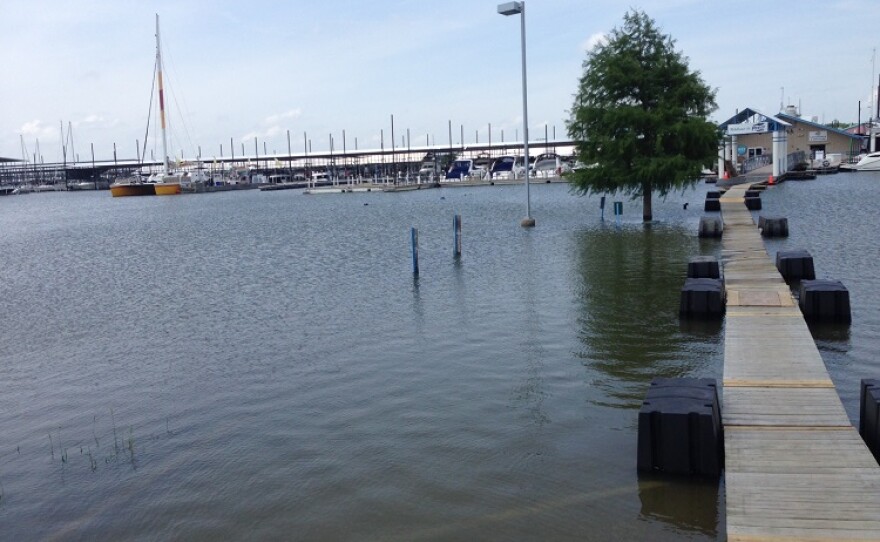Mother Nature has pretty much drowned the Texas drought.
That’s clear from color-coded maps just released from the U.S. Drought Monitor.
The group says for the first time since mid-2012, Texas is no longer in an “exceptional drought,” the worst of five drought categories.
Consider Lake Lewisville in North Texas.
In May of 2014, Lake Lewisville was 8 feet below capacity. Oh, how things have changed.
“We’re actually 15 feet higher than we were this same time last year,” said Bryan Horne, general manager at Pier 121 Marina.
You heard him right: from 8 feet down to 7 feet up.
Walking on water
An overflowing lake is exciting for boaters, who were sick of running aground last summer. But for employees at Pier 121, a swollen lake means some challenges.
“Half of our parking lot’s underwater,” Horne says. “We’ve had to build an additional 200 feet of walkway just to be able to get our members into the marina.”
The walkway Horne is describing is actually a floating footpath that snakes across what used to be a large parking lot. Horne offers a tour.
“We’re getting ready to walk on water,” Horne says.
Reserved parking spots are underwater, fire hydrants are submerged and the newly painted pillars the marina is so proud of are only impressing the fish.
Once the water recedes, there will definitely be clean up and repairs. Even so, Horne isn’t complaining.
“I would much rather have the rain, compared to the drought,” Horne says.
A doozy of a drought
The drought has been a doozy. Parts of North Texas have been cracked and dry since 2011.
Wichita Falls was so parched the city started converting wastewater to drinking water last year. The program earned an unfortunate nickname: Toilet to Tap.
Even in Wichita Falls, there’s been a dramatic turnaround. Lake Arrowhead has risen almost 10 feet in 10 days. It’s now just 10 feet below capacity.
“Wichita Falls has been one of the areas that’s been hit the worst with this drought over the last few years,” says Daniel Huckaby, a meteorologist with the National Weather Service in Fort Worth. “But just in the last few weeks, they’ve nearly doubled their water stores.”
Despite the good news this week from the drought monitor, a few sections of Texas are still listed as abnormally dry or in severe drought.
Huckaby says meteorologists were keeping an eye on El Nino, hoping for a wet spring. Mother Nature was a little late to the party.
“It was looking a bit dicey as we headed into spring with still the deficits, but it’s been a really rapid change,” Huckaby says. “The spring rainfall has been the best case scenario for North Texas.”
And the rain totals prove it. So far this year, Dallas-Fort Worth is at least 5 inches above normal. Corsicana got 11 inches of rain in just two days.
Storms in the forecast
There’s no end in sight. Storms are in the forecast every day for the next couple weeks.
“One thing is for certain is we have the least extent of drought in the state of Texas that we’ve had since late 2010 when this multi-year drought began,” Huckaby says.
And boaters on Lake Lewisville can feel the difference. Corinne Gowan was thrilled to spend a day on the water.
“Oh my gosh! This is so exciting,” she said. “I love seeing all this water. I actually feel like I’m in the ocean right now.”
Her VIP parking spot is flooded out and she has to tiptoe across a 50-yard floating dock to get to her slip. But Gowan says that’s all part of the fun.
“I think the walkway has just enhanced the whole thing,” she says. “And driving up to our new lake! We have a new lake out here now.”
And with more rain on the way, the parking lot lake on the shores of Lake Lewisville might be around for a while.
Map: Texas emerges from drought
Slide the map to compare drought conditions in Texas in May 2014 vs. this week. The red spots mark the worst areas -- places with extreme or exceptional drought.
National Weather Service radar








